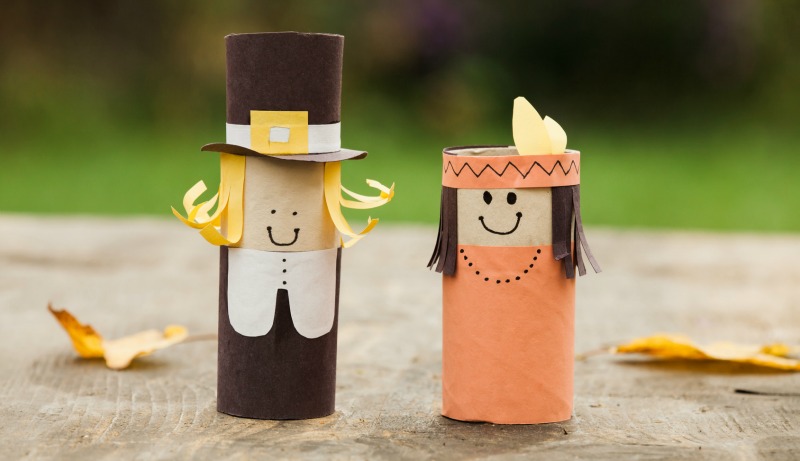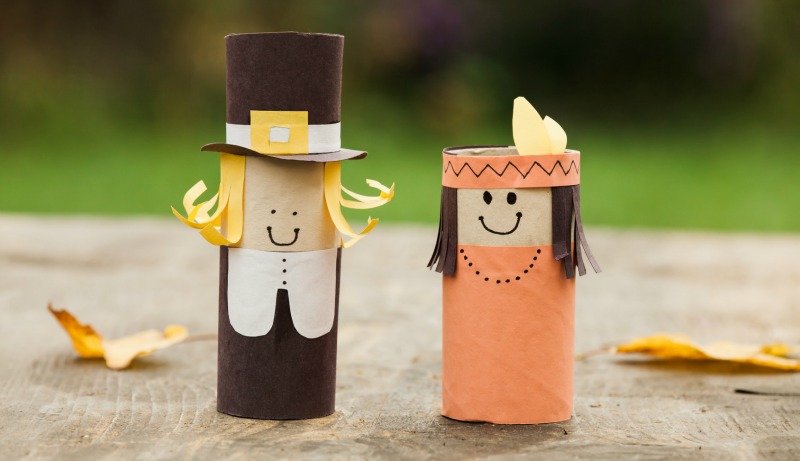Historian Samuel Eliot Morison says that “more bunk has been written about Pilgrims than any other subjects except Columbus and John Paul Jones.” After reading this, maybe you’ll agree.
Background
It’s one of American history’s most familiar scenes: A small group of Pilgrims prepare a huge November feast to give thanks for a bountiful harvest and show their appreciation to the Indians who helped them survive their first winter. Together, the Pilgrims and Indians solemnly sit down to a meal of turkey, pumpkin pie, and cranberries.
Just how accurate is this image of America’s first Thanksgiving?
Not very, it turns out. Here are some common misconceptions about the origin of one of our favorite holidays.
MYTH: The settlers at the first Thanksgiving were called Pilgrims.
THE TRUTH: They didn’t even refer to themselves as Pilgrims— they called themselves “Saints.” Early Americans applied the term “pilgrim” to all of the early colonists; it wasn’t until the 20th century that it was used exclusively to describe the folks who landed on Plymouth Rock.
MYTH: It was a solemn, religious occasion.
THE TRUTH: Hardly. It was a three-day harvest festival that included drinking, gambling, athletic games, and even target shooting with English muskets (which, by the way, was intended as a friendly warning to the Indians that the Pilgrims were prepared to defend themselves).
MYTH: It took place in November.
THE TRUTH: It was some time between late September and the middle of October—after the harvest had been brought in. By November, says historian Richard Ehrlich, “the villagers were working to prepare for winter, salting and drying meat and making their houses as wind resistant as possible.”
MYTH: The Pilgrims wore large hats with buckles on them.
THE TRUTH: None of the participants were dressed anything like the way they’ve been portrayed in art: the Pilgrims didn’t dress in black, didn’t wear buckles on their hats or shoes, and didn’t wear tall hats. The 19th-century artists who painted them that way did so because they associated black clothing and buckles with being old-fashioned.
MYTH: They ate turkey.
THE TRUTH: The Pilgrims ate deer, not turkey. As Pilgrim Edward Winslow later wrote, “For three days we entertained and feasted, and [the Indians] went out and killd five deer, which they brought to the plantation.” Winslow does mention that four Pilgrims went “fowling” or bird hunting, but neither he nor anyone else recorded which kinds of birds they actually hunted—so even if they did eat turkey, it was just a side dish. “The flashy part of the meal for the colonists was the venison, because it was new to them,” says Carolyn Travers, director of research at Plimoth Plantation, a Pilgrim museum in Massachusetts. “Back in England, deer were on estates and people would be arrested for poaching if they killed these deer.…The colonists mentioned venison over and over again in their letters back home.” Other foods that may have been on the menu: cod, bass, clams, oysters, Indian corn, native berries and plums, all washed down with water, beer made from corn, and another drink the Pilgrims affectionately called “strong water.”
A few things definitely weren’t on the menu, including pumpkin pie—in those days, the Pilgrims boiled their pumpkin and ate it plain. And since the Pilgrims didn’t yet have flour mills or cattle, there was no bread other than corn bread, and no beef, milk, or cheese. And the Pilgrims didn’t eat any New England lobsters, either. Reason: They mistook them for large insects.
MYTH: The Pilgrims held a similar feast every year.
THE TRUTH: There’s no evidence the Pilgrims celebrated again in 1622. They probably weren’t in the mood—the harvest had been disappointing, and they were burdened with a new boatload of Pilgrims who had to be fed and housed through the winter.










